
How to Amend Soil
Landscaping success often hinges on the quality of the soil. Different soil types present unique challenges, but with the right amendments and techniques, you can create a thriving environment for your plants, flowers, trees, and shrubs. In this post, we explore how to amend soil to either improve the drainage of clay-based soil, enhance moisture retention in sandy soil, and/or adjust pH and nutrient levels for optimal plant growth.
How to Amend Soil to Improve Drainage
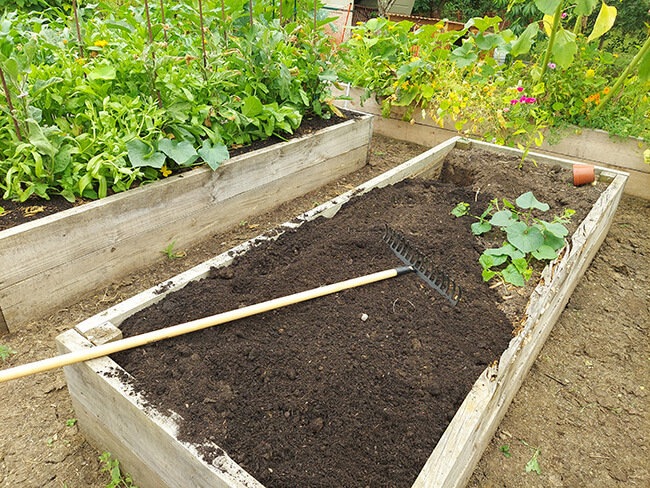 Clay soil is dense and can retain excess water, leading to poor drainage and root rot. Here are some tips to improve drainage:
Clay soil is dense and can retain excess water, leading to poor drainage and root rot. Here are some tips to improve drainage:
- Add Organic Matter: Incorporate compost, well-rotted manure, or leaf mold into the soil. Organic matter improves soil structure, making it more porous and improving drainage.
- Use Gypsum: Gypsum helps break up compacted clay particles, enhancing drainage and soil aeration without altering the soil pH.
- Create Raised Beds: Raised beds improve drainage by allowing excess water to flow away from plant roots. They also make it easier to work the soil.
- Sand: Due to its larger particles, horticultural sand creates space in the soil, which allows for better air movement and improves the flow of water.
How to Amend Soil for Enhanced Moisture Retention
Sandy soil drains quickly and struggles to retain moisture and nutrients. Here’s how to improve its water-holding capacity:
- Add Organic Matter: Just like with clay soil, adding compost, well-rotted manure, or leaf mold can significantly improve sandy soil. These materials increase the soil’s ability to retain moisture and nutrients.
- Use Mulch: Mulching helps retain moisture by reducing evaporation. Organic mulches such as straw, wood chips, or bark break down over time, adding nutrients and improving soil structure.
- Incorporate Biochar: Biochar is a form of charcoal that enhances soil structure, water retention, and nutrient availability. Mix biochar into the top few inches of soil for best results.
- Hydrogels: Hydrogels or water-absorbing polymers can be mixed into the soil. They absorb water and release it slowly, helping to keep the soil moist for longer periods.
Adjusting Soil pH and Nutrient Levels
 The pH level and nutrient content of your soil are crucial for plant health. Here’s how to adjust them:
The pH level and nutrient content of your soil are crucial for plant health. Here’s how to adjust them:
- Testing Soil pH: If you’re unsure if your soil pH is suitable for your plants, you can try this at-home method to determine your soil’s pH. Most plants prefer a pH between 6.0 and 7.0, but some plants, like blueberries and azaleas, prefer more acidic soil.
- Raising Soil pH: If your soil is too acidic, add lime (calcium carbonate) to raise the pH. Follow the recommendations based on your soil test results.
- Lowering Soil pH: If your soil is too alkaline, add sulfur or aluminum sulfate to lower the pH. Again, follow soil test recommendations for the correct amount.
- Balancing Nutrients: Use a balanced, slow-release fertilizer to provide essential nutrients. Organic options like compost, worm castings, or fish emulsion are great choices for improving soil fertility over time.
- Micronutrients: Don’t forget about micronutrients such as iron, manganese, and zinc. These are essential for plant health and can be added through specific fertilizers or organic matter.
General Tips for All Soil Types
- Regular Soil Testing: Test your soil every few years to monitor pH and nutrient levels. Soil pH does change over time and testing can help you make informed decisions about soil amendments. If you live in Stratford and area, you can take a soil sample to Stratford Agri-Analysis for testing. Simply advise them what you’d like to grow and they’ll tell you how to amend your soil to enhance growing conditions.
- Avoid Over-Tilling: Excessive tilling can disrupt soil structure and lead to compaction. Use minimal tilling techniques and add organic matter to maintain soil health.
- Consider species that require the same soil type. For example, hydrangeas thrive in acidic soil. Surrounding them with other acid-loving plants makes it easier to manage the soil for optimal plant health.
By understanding and amending your soil, you can create the ideal growing environment for your plants, flowers, trees, and shrubs. With these tips, you’ll be well on your way to a lush, thriving garden. And if you need professional landscaping assistance, contact us!


 Japanese beetles were introduced from Japan in the early 20th century and have since made themselves at home in Southwestern Ontario. These beetles have a metallic green color with copper-colored wings and are often found munching on the leaves of roses, grapes, and fruit trees.
Japanese beetles were introduced from Japan in the early 20th century and have since made themselves at home in Southwestern Ontario. These beetles have a metallic green color with copper-colored wings and are often found munching on the leaves of roses, grapes, and fruit trees. Aphids are native to North America and thrive in our temperate climate, reproducing rapidly and infesting a wide range of plants. This makes Aphids one of the most common among the common lawn and garden pests in our region. Look for clusters of small, green, pear-shaped insects on plant stems and new growth of various garden plants, including roses, vegetables, and fruit trees.
Aphids are native to North America and thrive in our temperate climate, reproducing rapidly and infesting a wide range of plants. This makes Aphids one of the most common among the common lawn and garden pests in our region. Look for clusters of small, green, pear-shaped insects on plant stems and new growth of various garden plants, including roses, vegetables, and fruit trees. Native to Asia, emerald ash borers arrived in North America in the early 2000s and have devastated ash tree populations. Look for D-shaped exit holes in ash tree bark, canopy dieback, and S-shaped larval galleries under the bark.
Native to Asia, emerald ash borers arrived in North America in the early 2000s and have devastated ash tree populations. Look for D-shaped exit holes in ash tree bark, canopy dieback, and S-shaped larval galleries under the bark. Spider mites are native to North America and thrive in warm, dry conditions, rapidly infesting plants. Look for fine webbing on the undersides of leaves and stippling or discoloration on foliage of garden plants, including tomatoes, beans, and ornamentals.
Spider mites are native to North America and thrive in warm, dry conditions, rapidly infesting plants. Look for fine webbing on the undersides of leaves and stippling or discoloration on foliage of garden plants, including tomatoes, beans, and ornamentals.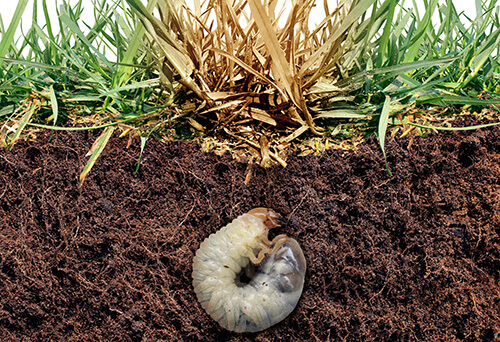 These soil-dwelling larvae are the immature stage of beetles like Japanese beetles, and they primarily feed on grass roots. Look for patches of dead or dying grass, which may indicate white grub infestation.
These soil-dwelling larvae are the immature stage of beetles like Japanese beetles, and they primarily feed on grass roots. Look for patches of dead or dying grass, which may indicate white grub infestation. Cutworms are native to North America and are nocturnal pests that feed on young seedlings at or below ground level. Look for seedlings that have been cut off at the base.
Cutworms are native to North America and are nocturnal pests that feed on young seedlings at or below ground level. Look for seedlings that have been cut off at the base. Slugs and snails are native to the region and are nocturnal pests that feed on plant foliage and tender shoots of a range of garden plants. Follow slime trails and look for irregular holes in leaves.
Slugs and snails are native to the region and are nocturnal pests that feed on plant foliage and tender shoots of a range of garden plants. Follow slime trails and look for irregular holes in leaves. Cabbage worms are native to North America and are the larval stage of small white butterflies. As their name implies, they feed on brassica crops. Look for green caterpillars on cabbage family plants (cabbage, broccoli, kale), causing chewing damage to leaves.
Cabbage worms are native to North America and are the larval stage of small white butterflies. As their name implies, they feed on brassica crops. Look for green caterpillars on cabbage family plants (cabbage, broccoli, kale), causing chewing damage to leaves. Thrips are native insects that feed on the sap of garden plants, including roses, onions, and peppers. They can transmit diseases to a wide range of plants. Look for tiny, slender insects and silvery patches on leaves.
Thrips are native insects that feed on the sap of garden plants, including roses, onions, and peppers. They can transmit diseases to a wide range of plants. Look for tiny, slender insects and silvery patches on leaves. Scale insects are native to North America and can weaken or kill plants by feeding on sap and excreting honeydew of ornamental and fruit-bearing trees. Look for small, immobile insects on stems and leaves, often surrounded by a protective shell.
Scale insects are native to North America and can weaken or kill plants by feeding on sap and excreting honeydew of ornamental and fruit-bearing trees. Look for small, immobile insects on stems and leaves, often surrounded by a protective shell.
 The soils in Southwestern Ontario are diverse, shaped by various factors including climate, parent material, and topography. Common soil types include clay, loam, and sandy soils. Each soil type has unique characteristics that affect water retention, drainage, and nutrient availability.
The soils in Southwestern Ontario are diverse, shaped by various factors including climate, parent material, and topography. Common soil types include clay, loam, and sandy soils. Each soil type has unique characteristics that affect water retention, drainage, and nutrient availability. Selecting the appropriate plants for your soil type is crucial for a thriving landscape in Southwestern Ontario:
Selecting the appropriate plants for your soil type is crucial for a thriving landscape in Southwestern Ontario: Homeowners in Southwestern Ontario can proactively improve soil conditions to meet their landscaping needs. Here are some suggestions:
Homeowners in Southwestern Ontario can proactively improve soil conditions to meet their landscaping needs. Here are some suggestions:
 In our region, the climate is perfect for many fragrant trees and shrubs that can be enjoyed throughout the year. In this blog post, we will look at some of the best trees and shrubs that are ideal for fragrance in Southwestern Ontario. Whether you are an experienced gardener or just starting, this post will help you create a beautiful, fragrant oasis in your own backyard.
In our region, the climate is perfect for many fragrant trees and shrubs that can be enjoyed throughout the year. In this blog post, we will look at some of the best trees and shrubs that are ideal for fragrance in Southwestern Ontario. Whether you are an experienced gardener or just starting, this post will help you create a beautiful, fragrant oasis in your own backyard. Katsura trees are unique deciduous trees that emit a refreshing, burnt sugar scent in the fall. They have heart-shaped leaves and attractive yellow flowers in the spring.
Katsura trees are unique deciduous trees that emit a refreshing, burnt sugar scent in the fall. They have heart-shaped leaves and attractive yellow flowers in the spring.



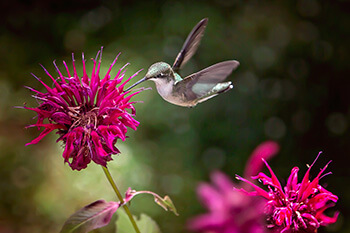 Lavender is renowned throughout the world for adding fragrance and beauty to any garden. This herb has beautiful purple blooms that fill the air with their calming scent.
Lavender is renowned throughout the world for adding fragrance and beauty to any garden. This herb has beautiful purple blooms that fill the air with their calming scent. This herb has delicate, fragrant flowers in vibrant shades of pink, purple, and white.
This herb has delicate, fragrant flowers in vibrant shades of pink, purple, and white.
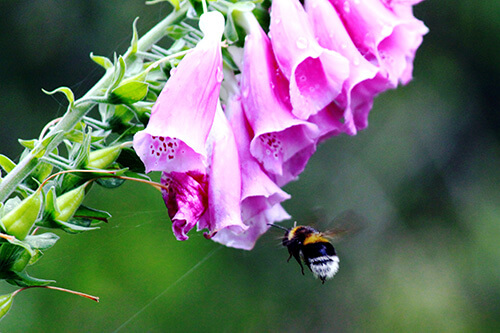 Planting a variety of
Planting a variety of 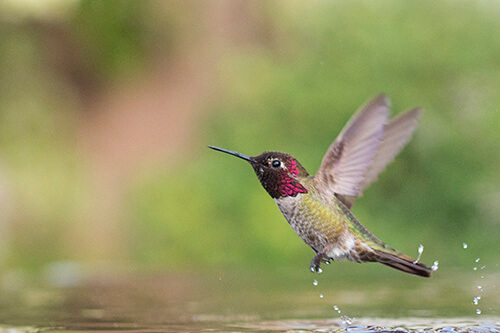 Providing a source of water is essential for wildlife in your backyard. Bird baths and
Providing a source of water is essential for wildlife in your backyard. Bird baths and  Keeping pets indoors or away from areas of wildlife activity is an important part of protecting wildlife in your backyard. Cats and dogs may be attracted to the small animals in your yard, such as birds, rodents, or other creatures. It is best to keep these pets inside or restrain them while they are outside so they do not disturb or harm any wildlife.Additionally, make sure that any outdoor dog runs are not set up in areas where wildlife likes to rest and feed. By taking these extra steps you can ensure that both your pets and the local wildlife stay safe and happy.
Keeping pets indoors or away from areas of wildlife activity is an important part of protecting wildlife in your backyard. Cats and dogs may be attracted to the small animals in your yard, such as birds, rodents, or other creatures. It is best to keep these pets inside or restrain them while they are outside so they do not disturb or harm any wildlife.Additionally, make sure that any outdoor dog runs are not set up in areas where wildlife likes to rest and feed. By taking these extra steps you can ensure that both your pets and the local wildlife stay safe and happy. Providing undisturbed areas in your garden is a great way to support local wildlife. By leaving some areas of your garden untouched, you are giving animals the chance to make their own homes without interruption from people or pets.This can take the form of wild patches of grass, untended corners of your yard, or piles of sticks and logs that provide harborage for small creatures. Even if it seems like doing nothing is best, keeping these areas free from human activity and disturbance will be beneficial to the wildlife that makes use of them.
Providing undisturbed areas in your garden is a great way to support local wildlife. By leaving some areas of your garden untouched, you are giving animals the chance to make their own homes without interruption from people or pets.This can take the form of wild patches of grass, untended corners of your yard, or piles of sticks and logs that provide harborage for small creatures. Even if it seems like doing nothing is best, keeping these areas free from human activity and disturbance will be beneficial to the wildlife that makes use of them.




